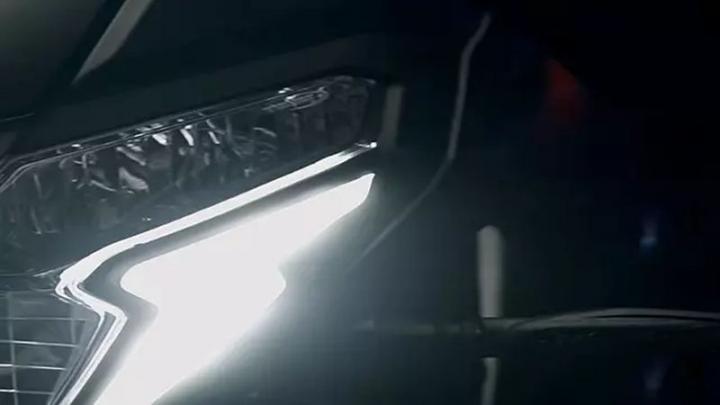News
Bajaj Auto's CNG-powered bike spotted testing
The CNG-powered bike could use a 110cc or 125cc single-cylinder engine.
Bajaj Auto MD Rajiv Bajaj recently announced the company's plans to introduce a CNG-powered motorcycle in the Indian market. Now, a test mule of what is believed to be the new CNG bike has been spotted testing.
The spy images suggest that Bajaj Auto's upcoming CNG bike could be aimed at the commuter segment. It has a flat, single-piece seat and an enclosed chain drive.
The bike is equipped with a telescopic fork at the front and has a mono-shock rear suspension. It rides on alloy wheels and has a disc brake at the front.
According to reports, the CNG-powered bike could use a 110cc or 125cc single-cylinder engine. Bajaj said that with the CNG-powered motorcycle, Bajaj should be able to cut down on operating and fuel costs by up to 50-65%.
Reports suggest that the project is internally known as 'Bruzer E101'. It is expected to go on sale in the next quarter.
Source: Zigwheels
- Tags:
- Indian
- Bajaj Auto
- CNG
- Bajaj
- spy shots
News
Bajaj to launch CNG-powered motorcycle in the next quarter
The CNG-powered motorcycle project is internally known as the Bruzer E101.
Bajaj Auto has been developing a new motorcycle that can run on both petrol and CNG. It is likely to debut in the second quarter of 2024.
Rajiv Bajaj, Managing Director of Bajaj Auto, has revealed in an interview that the world’s first CNG-powered motorcycle will be launched soon. The company had initially planned to introduce the bike in 2025, but they have been able to prepone the launch to the next quarter of this year. Bajaj said that with the CNG-powered motorcycle, Bajaj should be able to cut down on operating and fuel costs by up to 50-65%.
Technical details of the CNG-powered bike are still under wraps. However, media reports suggest that the project is internally known as the Bruzer E101. It is rumoured to use a 110cc engine.
It has also been reported that the bike could be manufactured at Bajaj’s Aurangabad plant, and later, at the Pant Nagar facility. Bajaj is said to have a production plan to build 2 lakh units per annum.
Source: Moneycontrol
- Tags:
- Indian
- Bajaj Auto
- CNG
News
2024 Bajaj Pulsar NS160 and NS200 breaks cover
Prices for the updated Pulsar NS160 and Pulsar NS200 are expected to be announced soon.
Bajaj Auto has taken the wraps off the 2024 edition of the Pulsar NS160 and NS200. Both bikes feature several upgrades and are powered by E20-compliant engines.
The 2024 Bajaj Pulsar NS160 and NS200 now come with a redesigned headlamp unit. The new V-shaped LED cluster has integrated LED DRLs.
Bajaj has also equipped the 2024 editions with a new digital instrument console. The LCD unit gets Bluetooth connectivity, offering features like incoming call and SMS notifications and turn-by-turn navigation.
Powering the NS160 is the familiar 160.03cc, single-cylinder engine that produces 17.03 BHP and 14.6 Nm, while the NS200 uses a 199.5cc, liquid-cooled, single-cylinder unit that puts out 24.13 BHP and 18.74 Nm.
News
2024 Bajaj Pulsar NS200 teaser shows new LED headlight
The overall design of the 2024 NS200 is likely to remain unchanged.
Bajaj is gearing up to launch the updated Pulsar NS200 in the Indian market. The latest teaser provides a glimpse of some of the changes made to the bike.
The 2024 Pulsar NS200 is expected to get a new LED headlamp with integrated LED daytime running lights and a digital instrument cluster. The teaser suggests that it might get features like Bluetooth connectivity with incoming calls, SMS alerts and turn-by-turn navigation.
The overall design of the 2024 NS200 is likely to remain unchanged. The bike is expected to use the same 199.5cc, single-cylinder engine. It produces 24 BHP @ 9,750 rpm and 19 Nm @ 8,000 rpm and is paired with a 6-speed gearbox.
The NS200 will carry forward the same suspension setup, which consists of an upside-down fork at the front and a monoshock at the rear. Braking will be handled by discs at the front and rear.
News
2024 Bajaj Pulsar N150 & N160 launched at Rs 1.18 lakh
The 2024 Pulsar N150 and N160 remain mechanically unchanged.
Last month, Bajaj unveiled the 2024 iteration of the Pulsar N150 and Pulsar N160. The bike maker has now announced the prices for the updated models.
The 2024 Pulsar N150 is available in two variants priced at Rs 1.18 lakh and Rs 1.24 lakh. The N160 also comes in two variants priced at Rs 1.31 lakh and Rs 1.33 lakh (ex-showroom).
Both the N150 and N160 now get a digital instrument console. It displays information like real-time fuel efficiency, average mileage and distance to empty. It also has Bluetooth connectivity via the Bajaj Ride Connect app. It enables the rider to accept or decline incoming calls and receive notification alerts.
The 2024 Pulsar N150 and N160 remain mechanically unchanged. The Pulsar N150 is powered by a 149.6cc single-cylinder that develops 14 BHP and 13.5 Nm, while the N160 uses a 165cc, single-cylinder engine that makes 16 BHP and 14.65 Nm.
Both bikes feature a telescopic fork at the front and a monoshock at the rear, while braking is handled by discs at both ends. The N160 is available with dual-channel ABS, but the N150 makes do with single-channel ABS.
News
2024 Bajaj Pulsar N150 and Pulsar N160 revealed
The N150 and N160 get a digital instrument console with Bluetooth connectivity.
Bajaj Auto has unveiled the 2024 Pulsar N150 and Pulsar N160. Both models now come with a digital instrument console.
The new instrument console displays useful information like real-time fuel efficiency, average mileage and distance to empty. It also has Bluetooth connectivity via the Bajaj Ride Connect app. It enables the rider to accept or decline incoming calls and receive notification alerts.
The 2024 Pulsar N150 and N160 remain mechanically unchanged. The Pulsar N150 is powered by a 149.6cc single-cylinder that develops 14 BHP and 13.5 Nm, while the N160 uses a 165cc, single-cylinder engine that makes 16 BHP and 14.65 Nm.
Both bikes feature a telescopic fork at the front and a monoshock at the rear, while braking is handled by discs at both ends.
News
2024 Bajaj Pulsar N250 spied with a USD fork
The Pulsar N250 could also get other updates, including a new digital instrument cluster.
The 2024 Bajaj Pulsar N250 has been spied testing. The latest spy images suggest that the bike is set to get a significant mechanical update this year.
The Pulsar N250 test bike featured in these spy images is equipped with an upside-down front fork. It replaces the conventional telescopic-type fork.
Besides this, the N250 is also expected to get an updated engine that will be compatible with E20 fuel. Currently, the 249cc, single-cylinder unit makes 24.1 BP and 21.5 Nm and is paired with a 5-speed gearbox.
The Pulsar N250 could also get other updates, including a new digital instrument cluster, offering Bluetooth connectivity and other features. The overall styling, however, is likely to remain unchanged.
Source: ackodrive
News
2024 Bajaj Pulsar NS160 caught testing ahead of launch
The 2024 NS160 will be powered by the same 160.3cc, single-cylinder engine as before.
A prototype of the 2024 Bajaj Pulsar NS160 has been caught testing ahead of its launch. It is expected to get several new features.
Spy images suggest the updated NS160 could feature a colour TFT instrument console and new switchgear replete with a multi-function button. The bike could also get a redesigned headlamp.
The 2024 Pulsar NS160 will be powered by the same 160.3cc, single-cylinder engine as before. It produces 17 BHP @ 9,000 rpm and 14.6 Nm @ 7,250 rpm and is paired with a 5-speed gearbox.
The NS160 comes equipped with an upside-down front fork and a monoshock at the rear. It gets disc brakes at both ends and rides on alloy wheels.
Source: Thrustzone
- Tags:
- Indian
- Bajaj Auto
- Bajaj
- Pulsar NS160
News
Bajaj Chetak Premium : Our observations after a day of riding
Riding the Chetak Premium is quite effortless in the city; the power on tap in Eco mode is more than sufficient for most purposes. It is not slow off the mark from a standstill by any means and has enough acceleration for typical city use.
Riding the Bajaj Chetak Premium electric scooter
The Premium variant of the Bajaj Chetak electric scooter uses the same battery pack that was on offer in the outgoing Chetak electric scooter. However, there is a bump in capacity from 2.9 kWh to 3.2 kWh through a denser packing of cells. The number of cells remains the same.
Given the bump in power, the range of the Chetak Premium is an estimated 126 km. You can expect a realistic 110 km range on full charge. The 110 km number seems realistic and achievable as through the course of our test ride through bumper-to-bumper traffic and free highways at varying speeds, the scooter held about ~50% charge after 50 km.
The Chetak Premium gets two riding modes - Eco and Sport. The Sport mode is available with the TecPac. You can move between the two modes by pressing the D button once. You can engage the Drive or Reverse mode by pressing the brake lever (front or rear) + long press of D or R respectively.
As the names suggest, both modes get a difference in the torque band. While the Eco mode is no slouch itself, the Sport mode provides much sharper throttle response and aggressive acceleration.
The top speed is rated at 63 km/h in the Eco mode, and 73 km/h in the Sport mode. It is here that the Chetak continues to lag behind similar spec'd peers.
Riding the Chetak Premium is quite effortless in the city; the power on tap in Eco mode is more than sufficient for most purposes. It is not slow off the mark from a standstill by any means and has enough acceleration for typical city use. Put in Sport mode and it gets very aggressive with the power delivery and you find yourself leaping forward.
The motor has a subtle whine when in motion. If you give to much throttle, you'll hear a beep.
Battery Capacity, Range & Charging
The Chetak Premium gets a 3.2 kWh battery that has the same number of cells as the current model but has a higher density, which has allowed the battery capacity to be bumped up from 2.9 kWh to 3.2 kWh.
The Chetak Premium (or even the Urbane) comes with only one battery option. We feel this is a missed opportunity, as offering a variety of battery packs could have allowed Bajaj to cater to a wider range of customers, both from a range and price perspective.
What's new on the Chetak Premium is that it gets an 800W onboard charger, with a very convenient charging cable that you can plug in at any 15A plug:

For reference, the Chetak Urbane gets a 650W offboard charger, but that can be used at any 10A plug:

It takes up majority of the under-the-seat storage space:

In this sense, the onboard charger and charging cable offered with the Premium make charging the scooter extremely effortless and hassle-free.
A full charge for the Chetak Premium will take 4 hours and 30 minutes. It does not support fast charging. However, you can get a 15.6 km range within 30 minutes for those emergencies.
Suspension and Handling
The ride quality of the 2024 Bajaj Chetak Premium is quite compliant, although the suspension is on the firmer side. So, while the scooter can tackle average city roads at ease, you won't enjoy riding on rumbler strips, or those huge speed-breakers (with a vertical profile on either end) that have become so common on our roads.
What is immensely annoying is, the amount of feedback through the handle from the front wheel. You can literally feel every undulation on the road, the unevenness on the road when you're riding on paver blocks, or roughly finished cement roads. What makes this worse is that the accelerator has some play. So when you're going through a rough patch, not only the handle, but the accelerator too vibrates!
That said, the scooter handles very well. It doesn't make its weight felt and is easy to manoeuvre inside the city and fit into tight parking spots.
Braking & Regeneration
The Chetak Premium gets a disc brake at the front, and a drum brake at the rear. Braking is very effective and competent, although the rear brake feels slightly spongy.
Regeneration on the scooter takes place when you're coasting (without any accelerator input) or when you brake. The intensity of regeneration is the same in Eco and Sport modes and kicks in at speeds above 10 km/h.
Hill Hold Assist: This feature is available with the TecPac. When triggered, the feature causes the brakes to be engaged for about three seconds. Activation of Hill Hold Assist depends on various factors that may appear a bit inconsistent in real-world usage.
Through the course of our test ride, we found the Hill Hold Assist to get triggered when you come to a stop by braking after being in motion and then let go of the brakes. If the vehicle is put in motion either manually (pushing/pulling) or rolling back, the function gets activated and the brake is engaged. However, the behaviour isn't replicated every time you do this.
Continue reading the discussion on the Bajaj Chetak Premium on our forum.
News
Bajaj Chetak Premium Electric Scooter : 5 Pros & 5 Cons
The 2024 Chetak Premium comes with a steel body, and has sturdy build quality. The fit & finish throughout is top-notch.
Bajaj Chetak Premium Pros
- Solid build quality along with top quality fit & finish. The electric Chetak is very well put together
- Looks and feels like and is a proper scooter, unlike some peers that have a toyish feel
- Well equipped. With the TecPac, gets all the latest features and functions, including connectivity features
- Bajaj's widespread sales and support network. Additionally, dedicated facilities are being set up for servicing electric scooters
- Convenient and portable charging cable that can be plugged in a regular 15A plug
Bajaj Chetak Premium Cons
- Top speed of 73 km/h and maximum range of 126 km is significantly lower than similarly priced rivals
- No battery options. Only one capacity battery is available
- Missing features such as ABS, fast charging, etc.
- Suspension is on the firmer side. Lots of feedback through the handle can get annoying on bad roads
- Under-seat storage space is limited. A full-face/full size helmet doesn't fit
Read Team-BHP's detailed 2024 Bajaj Chetak Premium Electric Scooter Review.
Pages








































